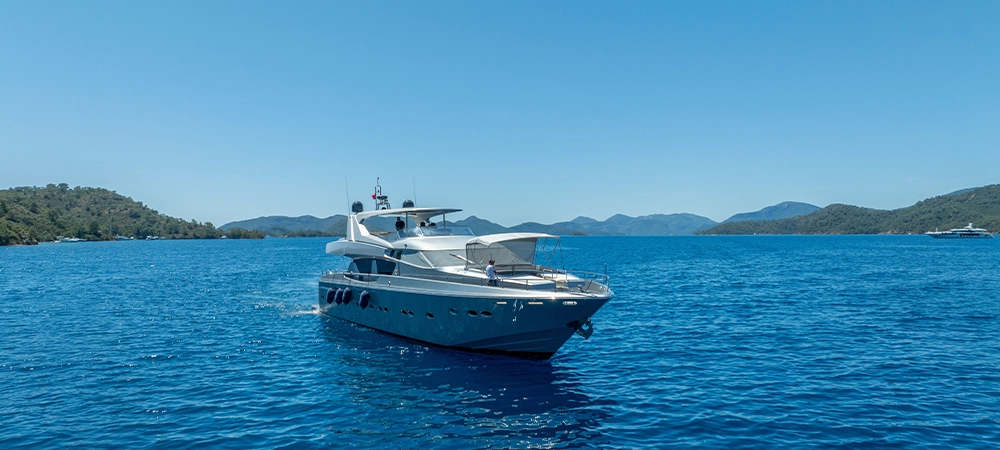Owning a yacht can be a dream come true, but it also comes with plenty of responsibilities. They are a significant investment, and it’s only prudent that you protect that investment. Not only that, but there can be many other financial dangers, such as liability, environmental damage, and collision with other boats.
Even though it’s not mandatory, yacht insurance for first-time owners is a critical part of yacht ownership. It will give you peace of mind and protection against a variety of risks. Here, we’ll walk you through all the essentials and provide you with everything you need to know about yacht insurance.
Understanding Yacht Insurance for First-Time Owners
Yacht insurance is a specialized form of marine insurance that takes into account the size and expense of the vessel. Boat insurance typically covers smaller watercraft, but yacht coverage is generally for vessels 27 feet and over.
This different type of coverage is required due to the higher value and increased risks associated with larger boats. There are a variety of coverage options available, and it’s vital you get a policy which suits your needs and situation.
Related Article: https://bucklerins.com/understanding-the-basics-of-ontario-boat-insurance-coverage/
Key Components of Yacht Insurance
Covering the cost of damage to your own vessel is vital, but there is much more financial protection you need to have as well. Here are the key components of yacht insurance for first-time owners:
Hull and Machinery Coverage
This is the core aspect of yacht insurance. This will cover damage to your own yacht. This will typically cover your own vessel against collisions with both other watercraft and objects such as rocks.
Along with this, you’ll need to be covered for grounding, fire, theft, and vandalism. This will ensure the cost of repairs or replacement of the structure of the yacht, as well as its onboard equipment. It’s also a good idea to check whether or not you’ll be protected against uninsured boaters. This may be included in the coverage or as an add-on.
Liability Insurance
Liability will protect you from damage to others. This includes damage to other boats and property, but also injuries to others. This will cover you for events such as someone slipping on your boat, a collision with another vessel, or damage to a marina. You’ll also want medical payments to be included in your liability coverage.
Environmental Liability
Canada has strict environmental regulations, and you need to protect yourself from this. The coverage will protect you from environmental damage caused by the likes of fuel spills or other environmental hazards you may cause.
Personal Effects Coverage
Yachts often carry expensive personal belongings. This can include personal items such as jewelry, but also electronics, water sports equipment and fine furnishings. Personal effects coverage will protect these items in the event of theft, loss, or damage.
Additional Coverages
Depending on your circumstances, you may want to invest in different types of extra coverage. Examples can include extended navigation limits, coverage for crew members, or protection when your yacht is in storage. Some policies also offer “lay-up” periods where your coverage can be adjusted in the off-season.
Factors Influencing Yacht Insurance Premiums
Yacht insurance premiums can vary depending on a wide variety of reasons; let’s check out what they are.
Value – The more expensive your yacht, the more it will cost to repair or replace. Hence, higher values mean higher premiums.
Size and Type – This usually links with the first point, but larger yachts are generally more complex and require higher premiums due to the increased risk.
Age and Condition – Older yachts are generally more expensive to insure as the likelihood of repairs increases.
Navigational Limits – Similar to mileage for a vehicle, your yacht will be more expensive to insure for more frequent use. This may also increase if you plan on venturing into international waters or high-risk areas.
Experience of the Owner – Your experience and boating history can also be taken into account. A seasoned sailor is likely to receive lower rates.
Claims History – The more prior claims you’ve made, the higher the risk you’ll have.
Choosing the Right Policy
One of the biggest mistakes you can make is choosing the first policy you find, as it’s unlikely to be perfect for your needs. Here’s what to look out for:
Evaluate Your Coverage Needs – You need to understand your usage and consider your risk profile. If you plan on long voyages or want to sail into high-risk areas, it makes sense to get the most comprehensive coverage.
Compare Quotes – Make sure to get quotes from multiple providers to find the best quote. Alternatively, you can consult with a broker. They’ll have access to multiple insurers and can answer any questions to ensure your policy is tailored to you.
Review the Policy Details – Carefully review your policy. This includes understanding the deductibles, exclusions, and conditions. Before setting sail, you need to know exactly what you’re covered for and what you aren’t.
Final Thoughts
While yacht insurance for first-time owners isn’t mandatory, it would be foolish to head out onto the water without it. It’s a vital part of protecting your investment, but it’s important to understand your coverage before signing up for a policy.
With the right coverage in place, you can enjoy the freedom of being a yacht owner with peace of mind. Yacht insurance can be complex, and seeking expert help is advised. If you’re interested in a policy, contact Bucker Insurance today, and we’ll be more than happy to help.






